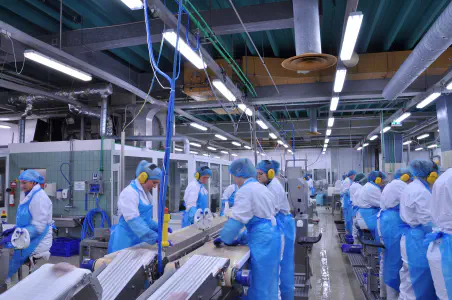In industries where the smallest particle of dust or drop of moisture can compromise
product integrity—from pharmaceuticals to electronics—clean room doors are an indispensable component of controlled
environment facilities. These specialized doors are designed to maintain strict hygiene and cleanliness standards,
ensuring that the controlled atmospheres within clean rooms remain unpolluted by external contaminants. This article
will delve into the features, benefits, and considerations of clean room doors, highlighting their critical role in
various business operations.
Foundation of Clean Room Integrity
Clean rooms are engineered with precise control over environmental parameters, including
particulate matter, temperature, humidity, and pressure. The doors to these rooms are, therefore, more than mere
entry points; they solidify the boundaries of a controlled environment, maintaining the clean room's integrity and
ensuring the success of sensitive operations.
Design and Construction: Precision Meets Functionality
The design and construction of clean room doors are focused on minimizing surface areas
where contaminants can collect and incorporating materials that resist corrosion, are easy to clean, and can
withstand repeated sterilization. Features often include:
Flush Surfaces: These reduce nooks where particulates can gather.
Tight Seals: Quality gaskets and sealants are used to prevent leakages of air.
Automatic Operation: Automated doors limit the need for physical contact, thereby reducing
the risk of contamination.
Interlocking Systems: Door interlocks ensure that only one door opens at a time to maintain
the room’s pressure and prevent cross-contamination.
Importance of Material Selection for Clean Room Doors
Material selection for clean room doors is pivotal in maintaining cleanliness standards.
Common materials include stainless steel, which offers easy cleaning and resistance to various cleaning agents, and
aluminum, known for being lightweight and durable. The door surfaces are typically non-porous and may be treated
with antimicrobial coatings to further prevent contamination.
Customization to Meet Industry-Specific Needs
Understanding that each industry has unique requirements, manufacturers offer customized
clean room doors tailored to different clean room classifications. This includes variation in design to meet the
strictest ISO standards or adapt to facilities with specific air filtration, and pressure differential needs.
Automation for Enhanced Contamination Control
Modern clean room doors often incorporate automation technologies. Sensors can allow doors
to open and close without physical contact, reducing the likelihood of contamination via touch. Furthermore,
advanced control systems can integrate doors into the clean room's HVAC and monitoring systems, coordinating door
operation with environmental controls for optimal efficiency.
Energy Efficiency and Insulation
Energy conservation is an additional concern with clean room operations, especially since
filtered, and conditioned air can be costly. Insulated clean room doors contribute to energy efficiency by
maintaining temperature and humidity levels with minimal leakage, thus reducing the workload on climate control
systems.
Regulatory Compliance with Clean Room Doors
In industries such as pharmaceutical manufacturing, semiconductor fabrication, and
biotechnology research, regulatory compliance is non-negotiable. Doors designed for clean rooms must adhere to
stringent standards set by organizations like the FDA, WHO, and ISO. This compliance extends to the doors'
construction, certification, and performance, ensuring that they effectively contribute to the operational standards
required in such critical environments.
Safety Features of Clean Room Doors
Safety is pivotal in the design of clean room doors. Features like breakaway capability for
emergency exits and transparency or vision panels to enhance visibility complement the robust locking mechanisms and
controlled access systems that are characteristic of these doors.
Maintenance and Cleaning Protocols for Longevity
The maintenance and cleanliness of clean room doors are just as important as their initial
design. Protocols typically involve regular inspections, scheduled cleanings, and part replacements to preserve the
doors' integrity. The ease of maintenance is often a crucial factor in the selection of clean room doors to ensure
that they remain functional over their expected lifespan without contributing to contamination risks.
The Key Role of Clean Room Doors in Business Operations
For any business that operates clean rooms, the doors are much more than physical barriers;
they are a key aspect of quality control. Whether it's a pharmaceutical company preventing microbial contamination
or a tech firm safeguarding against dust particles, the proper selection and maintenance of clean room doors can
prevent costly production halts, product recalls, and compromises in research conditions.
Looking Ahead: The Future of Clean Room Door Technology
As demands for cleanliness and contamination control continue to rise, so too does the
innovation in clean room door technology. The future may see the incorporation of advanced materials with inherent
antimicrobial properties, more sophisticated interlocking systems, and enhanced environmental controls that push the
boundaries of what clean room operations can achieve.
Clean room doors represent a critical investment in the operational efficiency and success
of businesses where contamination control is crucial. By ensuring that these doors meet the required
standards—through optimal design, construction, customization, and maintenance—businesses can effectively manage the
risks associated with contamination. As industries evolve and the need for immaculate production environments grows,
clean room doors stand as the guardians of purity, allowing for the continuation of groundbreaking work across
numerous fields of innovation.

